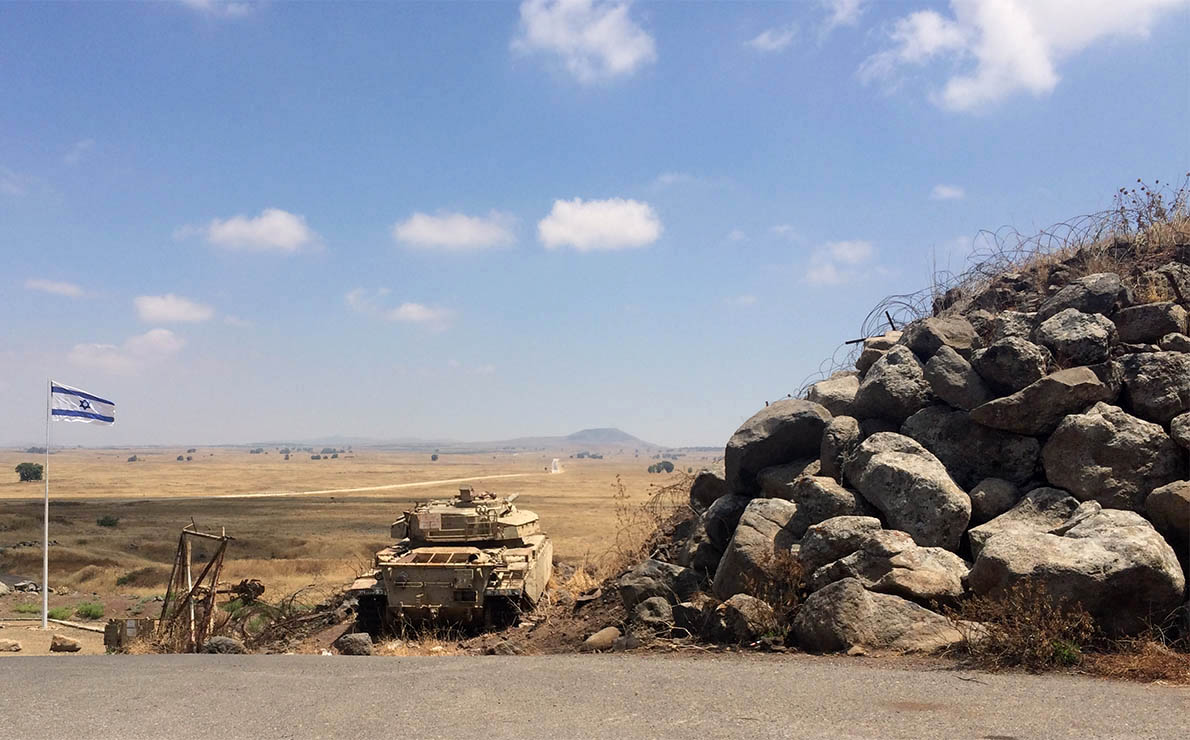Politics In Military - While General Mark Milley's recent apology about political partisanship and the military's conflict for a church photo with President Trump has sparked a discussion about how the military maintains nonpartisanship in the Trump administration.
President Trump walked from the White House to St. John on June 1st. Gen. Mark Milley (right), chairman of the Joint Chiefs of Staff, walks behind the president. Milley said it was a "mistake" that was learned, but the incident sparked a discussion within the Trump administration about how the military can maintain nonpartisanship. Patrick Semansky/AP Hide caption
Politics In Military

President Trump walked from the White House to St. John on June 1st. Gen. Mark Milley (right), chairman of the Joint Chiefs of Staff, walks behind the president. Milley said it was a "mistake" that was learned, but the incident sparked a discussion within the Trump administration about how the military can maintain nonpartisanship.
The Military In Politics
Last year, Australian Defense Minister Christopher Pyne, along with senior officers, answered questions from journalists. He was then asked a political question.
As Pyne began to answer, one of the officers, Australian Chief of Defense General Angus Campbell, tapped him on the shoulder. Pine was almost shocked.
"I'm sorry," Campbell said. "I request that the military officers step aside while you answer this question."
The incident is a dramatic lesson in civil military relations. The military is considered non-partisan, selflessly serving the nation and not affiliated with any political party.
The U.s. Military Isn't Ready For Another Insurrection
"General Campbell can be a very positive role model for generals and flag officers," said David Segal, professor emeritus at the University of Maryland College Park and a military sociologist.
Retired Army Col. Peter Mansour, formerly a top aide to Gen. David Petraeus and now a professor of military history at Ohio State University, had met Campbell before and was impressed by his actions that day.
"But doing something like that is always risky," Mansoor said, "and flag officers must have the courage to be risk-free when crossing civilian superiors."

Peter Feaver, a Duke University professor who specializes in civil-military relations, said Campbell "got it right, despite the panache. It was a good object lesson in respectful social distancing."
Getting American Security Force Assistance Right: Political Context Matters > National Defense University Press > News Article View
That social distance — politically — was not evident in early June when the chairman of the Joint Chiefs, General Mark Milley, walked with President Trump in Lafayette Square, which had just been aggressively cleared of protesters.
The general refused to speak to the soldiers when the president went to the Church of St. John to take pictures.
LIVE UPDATES: Protest for racial justice Gen. Mark Milley says the church photo-op with Trump was a mistake
Retired Marine General and Defense Secretary James Mattis later called it "a strange photo for a commander-in-chief-elect, with military leaders standing by."
The Politics Of Military Force” Has Been Published
"I am deeply concerned," he wrote, "that in carrying out his orders, members of our military will be selected for political purposes."
Faced with criticism on social media and calls for him to resign, Milley apologized in a taped speech to National Defense University graduates, admirals and future generals.
"The results, as you have seen, of the photo taken in Lafayette Square last week sparked a national debate about the role of the military in civil society," Milley told the graduates. "I shouldn't have been there. My presence at that time and in that environment created the perception that the Army was involved in domestic politics. As a commissioned uniformed officer, it was a mistake I learned from and I hope we all learn from it."

"I thought the apology was well done," said Feaver, the Duke University professor, "sent to the right place: a teaching moment for other military professionals."
Pakistan Names Syed Asim Munir As New Army Chief
Milley's apology also raises questions for all military professionals in the age of Trump, who sometimes fail to adhere to the traditional separation of the military and politics that can lead to direct partisanship - the president calls "my general" or advises soldiers to support him. .
"[Trump] is definitely bending the rules," said Nancy Sherman, a Georgetown University professor who teaches military ethics. "There is a lot of frustration with how you dodge bullets. They really struggle with how far from objecting to policy as opposed to objecting to individuals."
So what is a senior military officer to do? Running like General Angus Campbell? Apologize later like General Mark Milley? Or just guess when the official should not stand behind the president in the event?
Australian Defense Force chief General Angus Campbell speaks to members of the media after a ceremony at Lone Pine Cemetery in Turkey in April 2018. Some point to him as an example of how to manage civil-military relations. Emrah Gurrel/AP Hide caption
Above Politics: The U.s. Military Will Always Defend The Constitution
Australian Defense Force chief General Angus Campbell speaks to members of the media after a ceremony at Lone Pine Cemetery in Turkey in April 2018. Some point to him as an example of how to manage civil-military relations.
Sherman said at one point "you may have to retreat," although most officers resist such drastic action, saying you handle it quietly and behind the scenes.
"You have to know what you're getting into before it happens," said a retired senior official. Some retired officials were quoted anonymously because they did not want to publicly discuss sensitive topics with former colleagues.

"It's their duty to be there, but you don't admit to political wrongdoing," the retired official said.
The Diffusion Of Military Power
That may be easier said than done, said Tammy Schultz, who teaches at the US Marine Corps War College.
If military officials come in and create a scene, "some will argue that the military is not following constitutional orders and that we have a civilian military problem," he said. "If we do nothing and stay, others will argue that because of politicization, we have a civil-military problem."
Schultz said he plans to use the event as a classroom simulation - but change all the names.
A retired senior official said uniformed military leaders, especially the Joint Chiefs, "can't deal with the problems you describe. Or try to "restrain" the president if he exhibits inconsistent behavior and is potentially harmful to civil-military relations. t."
Repeal Of Military Vaccine Mandate Shows Changing Pandemic Politics
"The secretary of defense can and should," the official said. He sits at the crossroads of the military and the political.
And Congress also has a role to play and "in my experience they are very interested in the relationship between the military and society."
For Mansour, a retired Army officer and professor, Trump may continue to try to use the military as support, especially with a tough re-election battle.

"There may be a period between now and the November election when senior military leaders will have to be excused from accompanying the president for photo ops and speeches again," Mansoor said. "Given Trump's emphasis on personal loyalty, we'll see if he does."
Army Officers Routinely Lie And Deceive, Study Finds
An earlier version of this story indicated that General Mark Milley walked with President Trump to St. In fact, Millie stopped at Lafayette Square and did not accompany the President until he reached the church. America's political military is a recipe for disastrous messaging for both parties: keep the military (and retired generals) out of politics and elections.
US President Donald Trump walked from the White House to visit St. John with Attorney General William Barr, Defense Secretary Mark Esper, Chairman of the Joint Chiefs of Staff Mark Milley and others. June 1 George Floyd in Washington.
US President Donald Trump walked from the White House to visit St. John with Attorney General William Barr, Defense Secretary Mark Esper, Chairman of the Joint Chiefs of Staff Mark Milley and others. June 1 George Floyd in Washington. Brendan Smialowski/AFP via Getty Images
There is no precedent in modern US history for so many famous retired generals and admirals - including former Secretary of Defense and retired General James Mattis, three former chairman of the Joint Chiefs of Staff, former army chiefs and combatant commanders, and many others - in public. criticizing the decisions of a sitting president.. The only close case was the revolt of the generals in 2006, when several retired military leaders spoke out against Defense Secretary Donald Rumsfeld during his handling of the Iraq War.
The Return Of Political Warfare
This time, the dam broke on June 1, when US President Donald Trump threatened to use active military to use "tremendous force" to "dominate" US cities and when the country's top military official, the chairman of the Joint Chiefs of Staff . Mark Milley, in a war uniform, walked with Trump in front of St Petersburg for a photo-op.
Military drone range, laser range finder military, military range bags, military range targets, long range military radio, military radio range, military range finder, military long range binoculars, range rover military discount, military range rover, range of military drones, military range bag
0 Comments